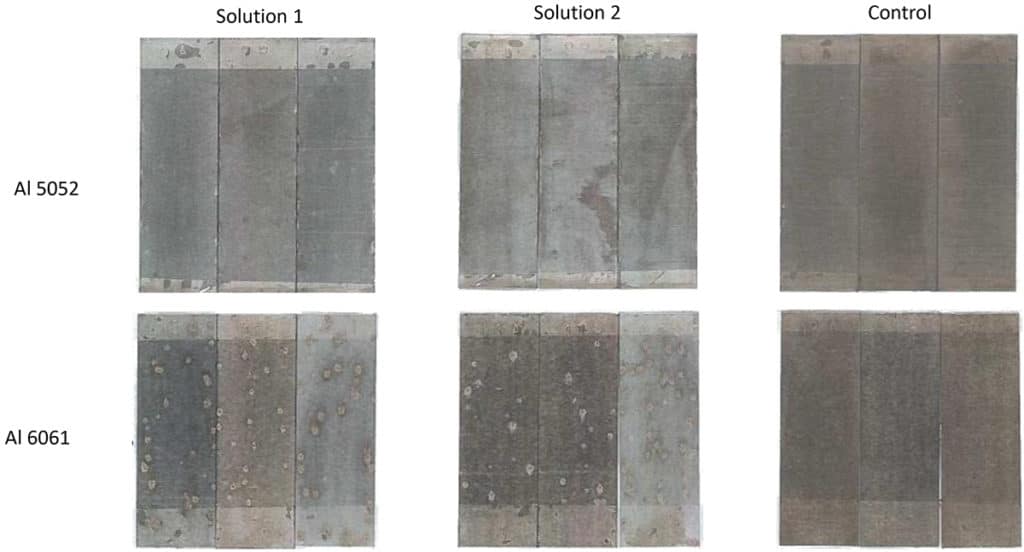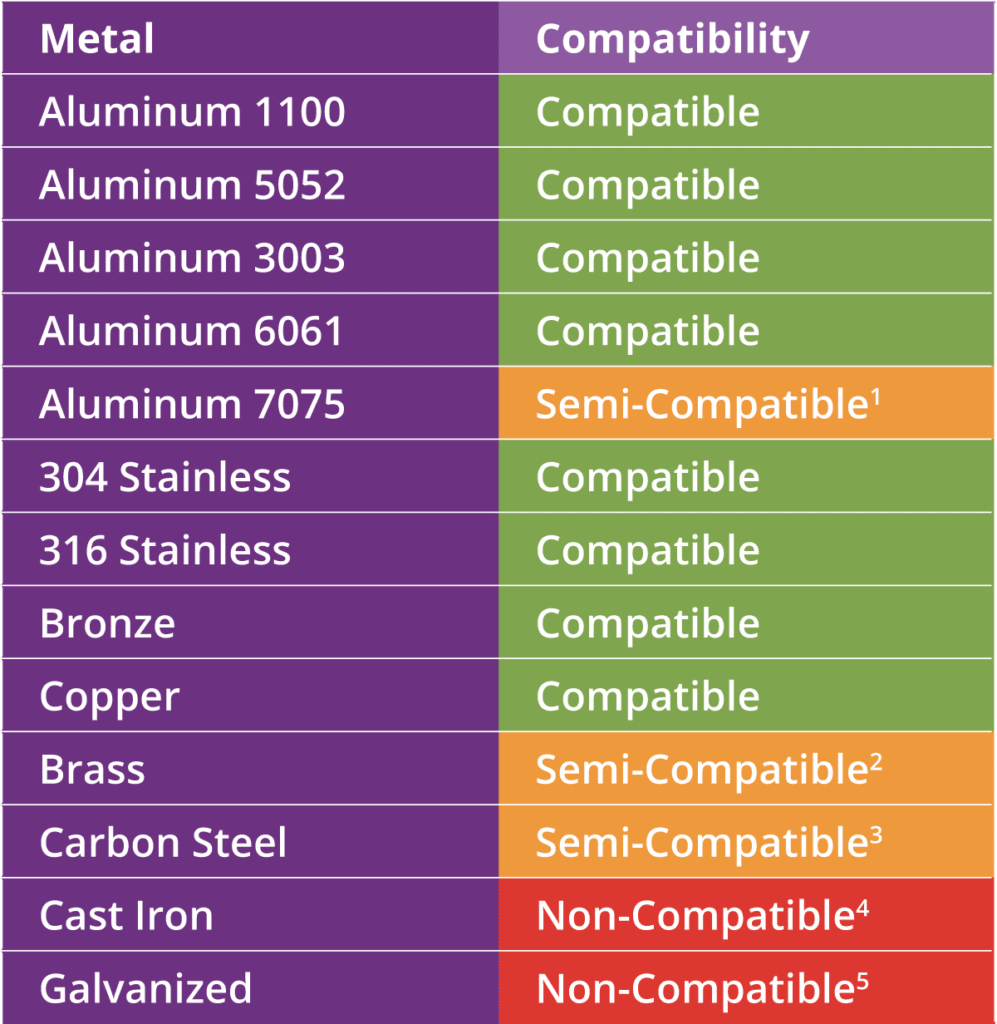Have you ever wondered how confident you should be that your sanitation chemical isn’t going to harm your equipment? There are procedures that test and report on material (metal) compatibility. Our R&D team uses an adapted version of procedure D 543-95 from the American Society Testing and Materials (ASTM) to test and report our material compatibility. Here is a short, generic overview of how our corrosion and compatibility testing program works:
- Gather the necessary materials and reagents for the testing. This includes sample “coupons” of the desired material as well as the solutions that are to be tested.
- Prepare the sample coupons by recording the weight, physical appearance, and dimensions.
- Prepare different dilution ratios of the solution for testing. Sterilex typically uses a few dilutions:
- Neat concentration
- Lower end of the disinfection testing range (1:1:10 for our PerQuat® Liquid products)
- Upper end of the disinfection range (1:1:8 for our PerQuat Liquid Products)
- Submerge the coupons in the solution for the required time. We test for 240 hours total, with solution changes every 24 hours to ensure a true measure of compatibility.
- Coupons are removed, washed, dried, and analyzed. The new weight is recorded, as well as any changes in physical appearance, feel or dimensions. Visual analysis includes searching for evidence of loss of gloss, developed texture, decomposition, discoloration, swelling, clouding, tackiness, rubberiness, crazing, bubbling, or cracking.
- The data is analyzed and reported.
- After testing on all identified key surfaces, we collect the data and include it on the product’s Tech Data Sheet to ensure customers and our distribution partners can easily find it.

Material compatibility testing is a key stage of the product development process that is often overlooked. How a chemistry or product reacts with the environment is as important as the function of the chemistry itself. Corrosion and damage to incompatible surfaces can quickly create large capital expenses and require production stoppages to repair or replace the damaged equipment. We know how important extending – not shortening – the expected lifespan of equipment is to our customers, so we invest extensive time and resources into material compatibility testing.
Through compatibility testing, we identified that Sterilex Ultra Activator Solution, when paired with Sterilex Ultra Disinfectant Cleaner Solution 1, was not compatible with soft metals such as aluminum. We recognized this was a problem for our customers and went to work to create a solution. Now, Sterilex Ultra Disinfectant Cleaner Solution 1 can be paired with Ultra Soft Metal Activator to create a solution that still penetrates and removes biofilm and kills biofilm-forming pathogens and is compatible with a wide variety of soft metals like those found in expensive heat transfer equipment.

Compatibility chart for dilutions of Sterilex Ultra Disinfectant
Cleaner Solution 1 and Ultra Soft Metal Activator
1Light oxidation
2Some darkening of surface
3Minimal rusting observed, same compatibility as water
4Can cause rusting on clean cast iron surfaces over time
5Corrosion, same compatibility as water
If you are having trouble with sanitizers damaging your equipment, please reach out to our RSM team. We would love to work with you to identify your problem and find a solution that best fits your sanitation program.